Why Patch Panels Are Crucial for Efficient Network Cabling
A reliable network infrastructure is essential for any modern business, supporting daily communication and operations. Patch panels play a key role in maintaining organization and efficiency among the components of a dependable network. Although often overlooked, patch panels help ensure networks are scalable, reliable, and easy to manage.
Patch panels offer practical benefits in organizing network cables, reducing long-term costs, and preventing potential issues. This article explains what patch panels are, why they are important, and how they contribute to a manageable network infrastructure, ultimately saving time and money.
| Topic | Key Points |
|---|---|
| What is a Patch Panel? | A patch panel acts as a central hub for network cables, simplifying management and routing and reducing clutter. It helps organize the connection of network hardware to endpoint devices. |
| Benefits of Patch Panels | Patch panels simplify cable management, improve troubleshooting, protect hardware, and reduce long-term costs, ensuring scalability and flexibility for growing networks. |
| Types of Patch Panels | Copper, fiber optic, rack-mounted, wall-mounted, shielded, and unshielded patch panels are available, each suited for different network sizes and requirements. |
| Choosing the Right Patch Panel | Consider network needs, cable type, space, shielding requirements, and future growth. Consulting a professional can ensure optimal selection. |
| Role in Office Rewiring | Patch panels streamline rewiring projects, minimize downtime, support future growth, and help maintain a well-organized network, making changes and upgrades efficient. |
| iFeeltech’s Expertise | iFeeltech provides end-to-end structured cabling solutions, ensuring optimal network performance, scalability, and reliable infrastructure for businesses. |
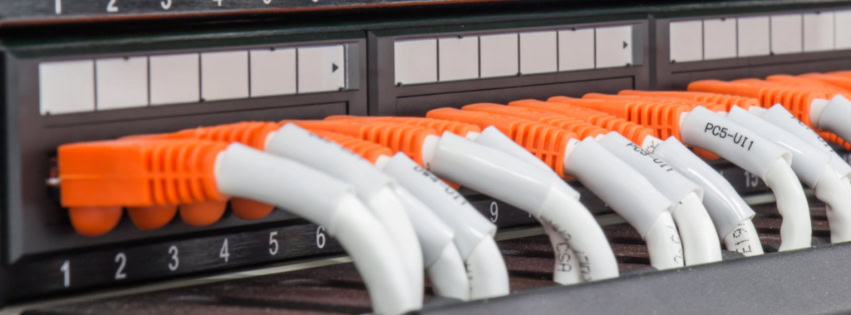
Table of Contents
What is a Patch Panel?
A patch panel functions similarly to a keystone jack and wall plate. However, unlike wall plates, which have a small number of ports and are installed near individual devices, patch panels have a large number of ports and are installed on server racks near network switches. This centralization makes it easier to manage and organize network connections.
A patch panel is a centralized hub where network cables come together, making it easier to manage and route network connections. It contains multiple ports that allow network cables from different devices—such as computers, servers, and switches—to be neatly organized in a single rack.
Patch panels are typically mounted in network racks or closets to bridge the main networking hardware (like switches or routers) and endpoint devices. Managing network cables can become challenging without patch panels, especially when adding or reconfiguring hardware. Properly using patch panels helps maintain structured cabling, reduce clutter, and minimize the risk of downtime.
Key Benefits of Using Patch Panels
Patch panels are an important component of structured cabling, which can significantly enhance the efficiency of your network setup. Learn more about the benefits of structured network cabling and how it can improve your business.
While patch panels are not strictly necessary, they offer significant advantages in organizing network cables and simplifying troubleshooting. Here are some key benefits:
1. Simplified Cable Management
One of the primary benefits of using patch panels is their ease of cable management. Patch panels allow for neat, organized connections instead of a tangled mess of cables running directly between devices and network hardware. This makes identifying and tracing cables easier, simplifies maintenance, and reduces the chance of mistakes during network changes.
2. Improved Maintenance and Troubleshooting
Troubleshooting network issues can be time-consuming, especially if cables are poorly organized. Patch panels make locating connections, identifying issues, and performing maintenance straightforward. With well-labeled patch panels, technicians can quickly determine which cable corresponds to which device, significantly reducing downtime during repairs or upgrades.
3. Increased Flexibility and Scalability
As businesses grow, so do their network needs. Patch panels provide the flexibility to easily add, remove, or reconfigure devices without significant disruption. This scalability ensures network infrastructure can evolve with the business, supporting additional devices or upgrades as needed.
4. Protection for Network Hardware
Frequent cable plugging and unplugging can cause wear and tear on expensive networking equipment, such as switches and routers. Patch panels serve as intermediaries, protecting these critical components by handling the connections instead. This prolongs the life of your network hardware and reduces the risk of damage.
5. Cost Efficiency in the Long Term
Although the initial cost of installing patch panels might seem like an added expense, they can lead to significant savings over time. By simplifying maintenance, reducing downtime, and protecting valuable network equipment, patch panels help lower overall operating costs. Their streamlined management also reduces the labor required for network upgrades and troubleshooting.
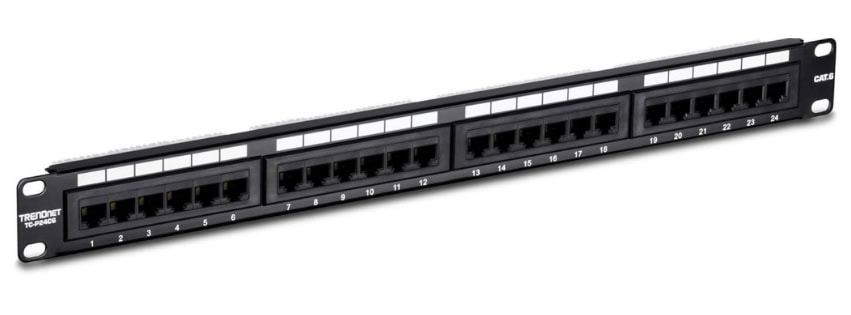
Types of Patch Panels for Different Business Needs
Choosing the right network cabling can also impact the effectiveness of your patch panel setup. If you are unsure about which type of cable works best, refer to our guide on network cables to make an informed decision.
Patch panels come in various forms, each suited for specific types of network requirements. Here are some of the common types:
1. Copper Patch Panels
Copper patch panels, typically Cat5e, Cat6, or Cat6a, are widely used for Ethernet cabling. They are suitable for most small—to medium-sized businesses that rely on standard data speeds. Copper patch panels are also ideal for local area networks (LANs) and are cost-effective for shorter distances.
2. Fiber Optic Patch Panels
Fiber optic patch panels are designed for high-speed data transmission and are commonly used in larger enterprises or data centers. They support long-distance connections and provide higher bandwidth compared to copper patch panels. Fiber optic panels are essential for businesses that require fast data transfer and reliable connectivity across multiple locations.
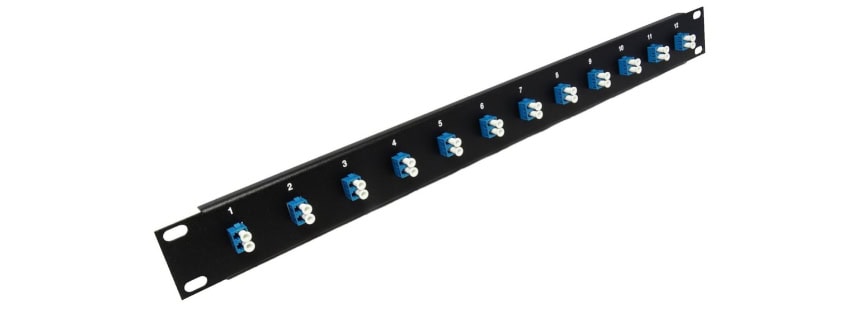
3. Rack-mounted vs. Wall-Mounted Patch Panels
Patch panels can be either rack-mounted or wall-mounted, depending on the available space and the scale of the network. Rack-mounted patch panels are typically used in larger network setups, where multiple patch panels can be housed in a server rack. Wall-mounted patch panels are better suited for smaller networks or spaces where a full rack is impractical.
4. Punch-Down, Keystone Blank, and Coupler Patch Panels
- Punch-Down Patch Panels: These require the wires to be manually punched down into the patch panel using a punch-down tool. This type is typical for Ethernet setups and provides secure, fixed connections.
- Keystone Blank Patch Panels: These panels feature empty slots that support standard-sized keystone jacks. The cables are punched down into individual keystone jacks, which are then inserted into the panel, allowing for more modular connections.
- Coupler Patch Panels: Coupler patch panels contain couplers that allow cables to be plugged in directly using RJ45 connectors. These are toolless panels and are useful for quick and easy installations.
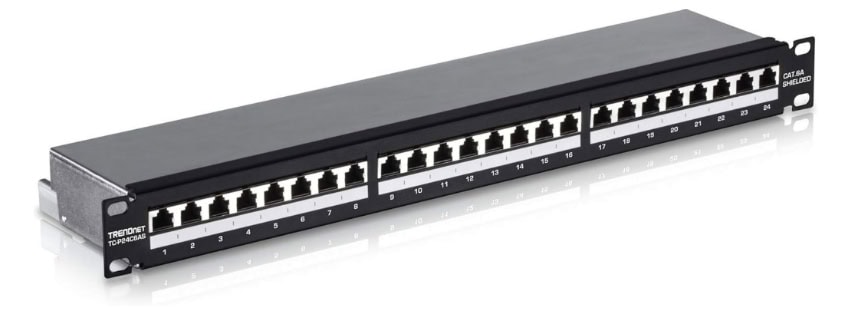
5. Shielded vs. Unshielded Patch Panels
If you are interested in learning more about the cost implications of structured cabling installations, our structured cabling cost calculator may be useful. It provides insights into budgeting for different network setups.
Shielded patch panels are used in environments with a high risk of electromagnetic interference (EMI), such as industrial settings. They provide extra protection to ensure data integrity. Unshielded patch panels are more common in standard office environments where EMI is not a major concern.
Selecting the correct type of patch panel is crucial for optimizing network performance and ensuring that your infrastructure can adapt to future needs.
Step-by-Step Guide: Choosing the Right Patch Panel for Your Business
Proper planning is essential for choosing the right patch panel, but so is having a checklist to ensure you cover all important aspects. Use our network cabling checklist to help guide you through the process.
Selecting the right patch panel for your network can seem overwhelming, but breaking the decision down into clear steps can simplify the process. Here’s a step-by-step guide to help you make the best choice:
1. Assess Your Network Needs
Start by understanding your network's current and future needs. Consider the number of devices that need to be connected, the expected data speeds, and any plans for network expansion. For small—to medium-sized offices, a copper patch panel might be sufficient, whereas larger setups may require fiber optic panels to meet high-speed data demands.
2. Determine the Type of Cables in Use
Your choice of patch panel should be compatible with the type of cabling you are using. A copper patch panel is the right match if your network uses Cat6 or Cat6a cables for Ethernet. A fiber optic patch panel will be necessary if your setup involves fiber optic cabling for high-speed data transfer over long distances.
3. Consider Space and Installation Requirements
Evaluate the available space for mounting your patch panel. A rack-mounted patch panel is ideal if you have a dedicated server rack. However, a wall-mounted patch panel might be a better fit if you are working with limited space or a smaller network setup.
4. Evaluate the Need for Shielding
A shielded patch panel is recommended for environments where electromagnetic interference is a concern, such as manufacturing facilities. An unshielded patch panel should suffice for typical office environments where interference is minimal.
5. Plan for Future Growth
Think about your network's scalability. Choose a patch panel that can accommodate future growth, whether that means additional ports or compatibility with higher data speeds. This will prevent you from needing to replace the panel as your network expands.
6. Consult with a Professional
If you are unsure about which patch panel is the best fit for your needs, consult with a network professional. They can provide insights based on your specific requirements and help ensure that your network infrastructure is set up for success.
Following these steps, you can select the patch panel that best suits your business needs, ensuring a reliable, scalable, and efficient network infrastructure.
iFeeltech’s Expertise in Structured Cabling Solutions
If you are looking for professional help with your network infrastructure, our professional network installation services are designed to create efficient, organized cabling systems that are scalable for future growth.
At iFeeltech, we understand the importance of a well-structured and reliable network infrastructure. Our team specializes in designing and implementing structured cabling solutions tailored to your business's specific needs. With years of experience in network installation, we provide end-to-end services that ensure your network is optimized for performance, scalability, and ease of maintenance.
Our approach focuses on creating efficient, organized cabling systems that support current and future growth. Whether it’s a new installation, an office rewiring project, or an upgrade to existing infrastructure, our experts can help you select the right components—including patch panels—to build a robust network.
We work closely with our clients to assess their unique needs and develop solutions that fit their technical requirements and budget. By using high-quality materials and following industry best practices, we ensure that your network will perform reliably and meet the demands of your business as it grows.
If you’re planning an office rewiring project or need help with your network infrastructure, contact iFeeltech today. Our team is ready to assist you in creating an efficient, reliable, and future-ready network.
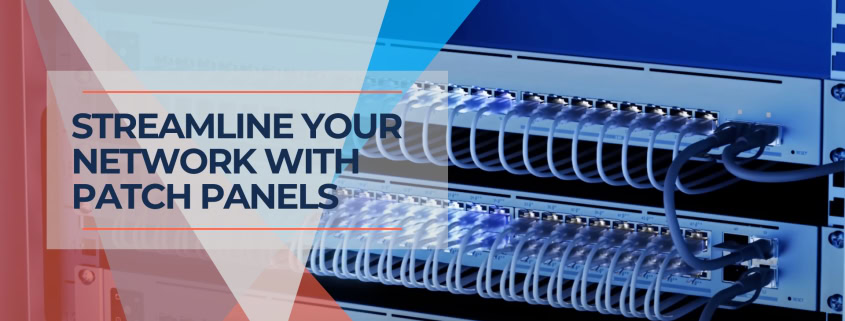



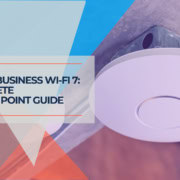
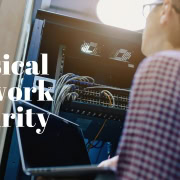


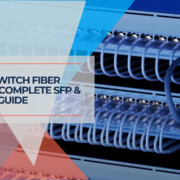


Leave a Reply
Want to join the discussion?Feel free to contribute!